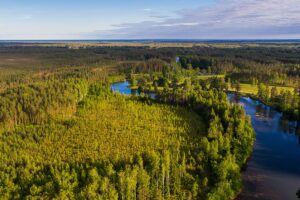On Thursday, May 6th, the Dow Jones Industrial Average fell almost 1,000 points, a little more than nine percent, in 16 minutes, and no one knows why. At day’s end, the DJIA was down only 342 points, and everyone didn’t think that was too bad…considering the place it had visited.
Fingers of possible blame pointed in many directions—Greeks bearing debt, Jihadist glitches, automatic computer-trading programs, a trader’s “fat-finger” mistake, jitters about financial-reform legislation, too much sugar in Wall Street’s afternoon power drinks, a Madoff mole wreaking revenge.
A thousand point drop got me to thinking.
I’d been talking to my daughter, Molly, a few minutes before the DJIA’s dipsy-doodle. She works on the speed desk at Bloomberg News in Manhattan, feeding headlines and financial news into the company’s terminals. She’s up to the minute on this stuff; I’m a lagging indicator, often intentionally so. We were talking about the future and how to prepare for it.
I said I thought people in their 20s and 30s were going to have a much tougher time earning livings and preparing for retirement than Baby Boomers, because the global financial system — and the American end of it, in particular — seemed increasingly volatile, increasingly fragile and increasingly vulnerable to system-breakups, from both internal and external sources. System risks, in short.
This got me thinking about hedges.
Gold is often touted as a hedge against inflation. But when I looked at gold price and the Consumer Price Index, I saw that inflation had risen with reasonable consistency year to year while gold was volatile—spiking in 1980 and during the last several years, but lagging the CPI for most of the years in between. One study I reviewed showed the average annual rate of return on gold between 1979 through 2008 was 5.37 percent, most of the gain coming during the last decade, compared with stocks at 11.9 percent, 3-month T-bills at 5.9 percent and rare coins above 10 percent.
Gold is a fear purchase, not an inflation hedge. If you think it’s likely that the world will fall apart, you put gold in your bedroom safe so you can buy guns and toilet paper. If that time comes, inflation will have solved itself through collapse.
Gold doesn’t behave like a commodity, because people buy it for reasons other than consumption and utility. It’s a non-renewable resource like oil, but it doesn’t get used up like oil, coal and natural gas. It seems to me that people use it as a financial worry bead, fingering it more in times of high stress.
When Molly set up her retirement account last year, I gave her the conventional advice about index funds and broad baskets of stocks and bonds. But what I wanted her to do was to set up a real-estate IRA to buy land, which she couldn’t do.
An inflation hedge should track inflation…and do a little better.
Between 1999 and 2009, the average annual inflation rate has been 2.6 percent. For the 10 years preceding, it was 3 percent.
It’s difficult to measure national returns on timberland investments, because tracts vary so much in size, management, types, length of ownership and other factors. The database at the National Council of Real Estate Investment Fiduciaries is widely used for comparing investments, but it’s skewed toward large tracts and tax-exempt investors, primarily pension funds. The same bias is found in NCREIF’s farmland index, all of whom are tax-exempt investors.
Nonetheless, the NCREIF average annual timberland return in the 20 years between 1990 and 2009 was 2.76 percent. The average annual return for farmland between 1992 and 2009 was 2.74 percent.
Using the NCREIF indexes, farmland and timberland returns did a bit better than inflation during the last two decades. These types of land investments as measured by NCREIF are reasonably good inflation hedges.
A 2009 study from Jeff Mortimer at J.P. Morgan Investment Analytics & Consulting found that timberland “…has provided an annualized return of 14.60%…” over the past 22 years while correlating “highly with inflation….”
Looking ahead, I see nothing that would suggest that stocks and gold are getting less volatile, and the financial system in which they function seems to be looking more vulnerable, more risky. Whether systemic risk is reduced in the future is anybody’s guess; mine is that it will not.
Gold may be the coin of last resort, but short of total collapse, farmland and timberland appear to be better hedges against both less-than-catastrophic events and inflation. If nothing else, land prices will appreciate due to population growth over the long term. And if the toilet-paper choice is between gold bars and leaves, well….
This content may not be used or reproduced in any manner whatsoever, in part or in whole, without written permission of LANDTHINK. Use of this content without permission is a violation of federal copyright law. The articles, posts, comments, opinions and information provided by LANDTHINK are for informational and research purposes only and DOES NOT substitute or coincide with the advice of an attorney, accountant, real estate broker or any other licensed real estate professional. LANDTHINK strongly advises visitors and readers to seek their own professional guidance and advice related to buying, investing in or selling real estate.









I agree with the vast majority of your commentary. However, the NCREIF figures your present seem inaccurate. The total annualized return through 12/31/09 for the previous 20-yr period for timberland, according to NCREIF, is 11.75%; of which 5.24% was from the cash yield. Could you be referring to a quarterly return?
Matt:
Well, I’m always able and willing to goof up when it comes to math, science, religion, grammar and hitting the cutoff man.
I calculated the average annual return for timberland and farmland separately, using the quarterly NCREIF data. I did this while reading two Sunday papers and watching the Sunday morning shows, so perhaps I wasn’t paying sufficient attention.
I added the return rates for four quarters for each year, then divided by four, to get an average return for that year. Then I summed the years in the sample and divided by the number of years.
I, too, thought the returns were too low, which is why I added the Goldman Sachs information. Most of the analyses that I looked at last week from RMS, Campbell Group, etc. showed annual timberland return above 10 percent.
If my methodology was off, I stand humbly before the math bar and thank you for the correction. If I misread the data or was victimized by fat-finger syndrome with my calculator (which was bouncing around on the sofa arm), I plead advancing age. Which is no plea at all. Yrs. Curtis
Sorry, I meant to reference J.P. Morgan Analytics, not Goldman Sachs in my response. I’m in the middle of writng something else, quoting Goldman Sachs. Multi-tasking is for the youthful. C
Curtis,
Thank you for the great article! I am a farm/ranch broker in CO specializing in production ag properties. We see dryland returns of 4-5% and returns on irrigated ground are 6% +. If anyone is interested in buying land through your IRA we are familiar with the process and can help facilitate that.
With the minor slip up regarding NCREIF timberland returns (for a chart showing timberland returns as compared to traditional investments, check out Molpus.com), you have written a great article, Curtis. I have been waiting for someone to address the gold vs. land debate for some time and you have done an excellent job. I tip my hat to you! Rick Taylor, ALC, forester
We recently wrote a similar argument in an article for Texas Trophy Hunters Assn magazine…land represents a solid longterm investment, hedge against inflation, and has been used to “hold” wealth by many of the world’s wealthiest folks. The wealthy make their fortunes is a variety of ways, but choose land as a basis for banking that wealth. We should all have at least some of our money working the same way.
Curtis: An excellent article. You hit this one out-of-the park! You can’t eat gold and some people might be suprised that it may be hard to exchange it for a loaf of bread if a crisis hits. On the other hand, you can grow food and raise livestock on land if need be or make it available to those who do. One caveat is to watch the tax situation and be sure you get all the write offs coming to you. You can “bank” money in land but you still have to pay the taxes. Avoid “resorty” areas that are more heavily taxed and stay with strictly agricultural, forest, and hunting land. I am glad you set the record straight in regard to gold and commodity investing in general. Give me land, lots of land! God Bless.
Kurt
Kurt, I would encourage you to seek a better understanding of gold as money. Money arose to facilitate trade. So you wouldn’t have to trade 300 loaves of bread for a cow. Because that single rancher doesn’t need all the bread it would take to buy a cow. With “money” you can sell your bread on the market for gold or paper and then use it. Trade is much more efficient. We are going to regress in the next few years but not all the way back to first civilation silly. Paper money won’t be an option, so it will be metals. Sure bread might go up in value faster than gold, but in my opinion, you will still be able to use gold to eat. Don’t get too carried away.
I was hoping this article would do a comparison of past economic cycles. I don’t care how land has done over the last 20 years, that could be just one bull or bear market. How has it done historically in time of very high inflation over the centuries? If we are planning on seeing very inflation in the future I would put all of my paper money in precious metals, and borrow as much money as possible to purchase cash flow land and/or real estate.